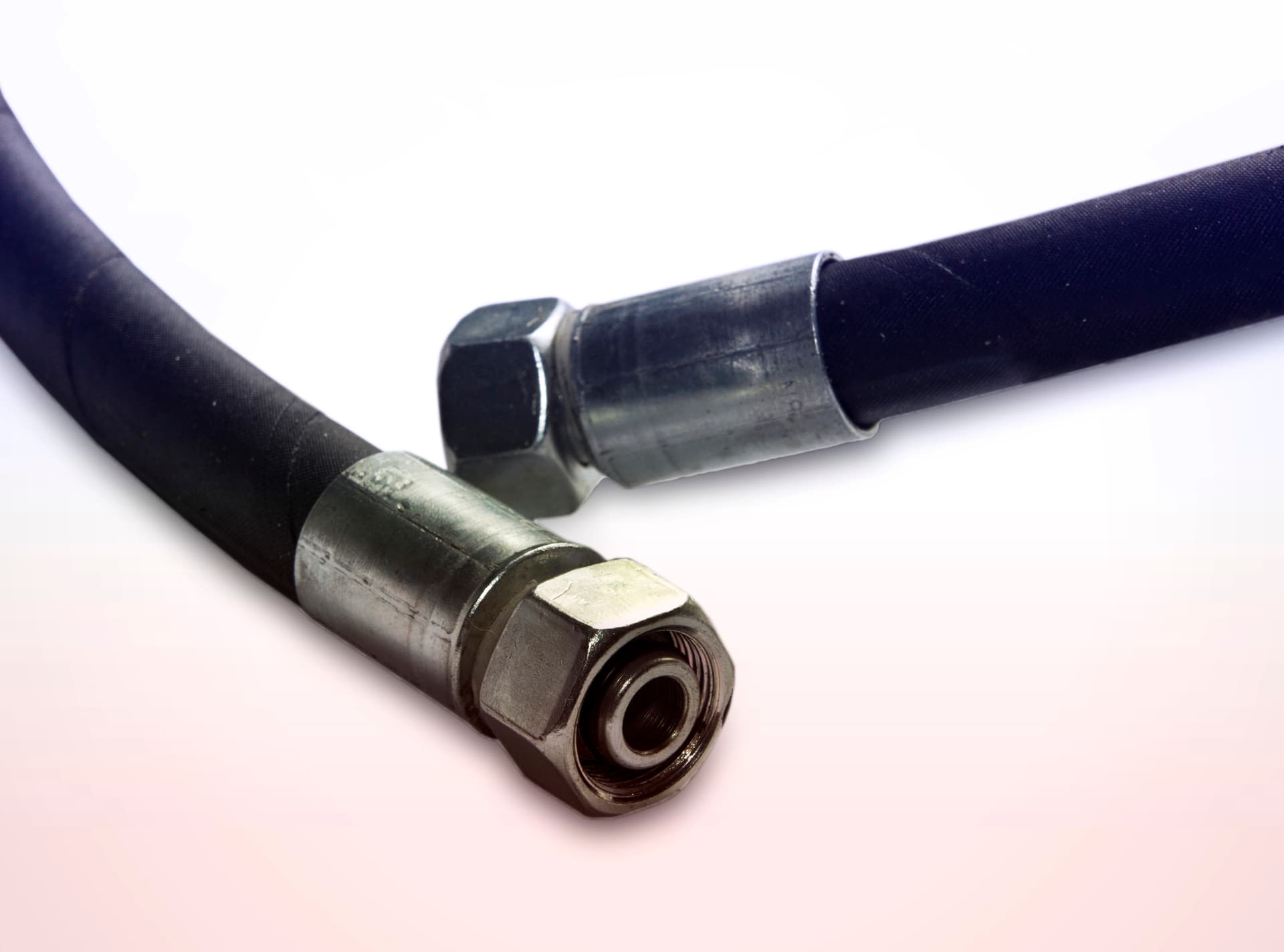How to Change a Hose in Your Hydraulic System

How to Change a Hydraulic Hose
Changing a hose within a hydraulic assembly is a fairly easy task. However, it is important to prioritize safety above all else while replacing the hose. Hydraulic hose assemblies can operate under immense pressure, and coming into contact with a hydraulic fluid that is under a high amount of pressure can be very dangerous. Once you have safely turned off the hydraulic system and are wearing appropriate protective gear, you can begin replacing your hydraulic hoses.
- 1. Asses how many components must be removed to replace the damaged hose. Remember to label the components you remove so that they can be reinstalled with ease.
- 2. Determine if the hydraulic component the hose serves, or any other hydraulic components which must be removed, have a live load or weight on them. If the oil in the system you are disconnecting is under pressure, it may blow out forcefully when the fittings which hold it are loosened, causing the oil to be discharged under pressure. Be sure to relieve the pressure from these components before proceeding.
- 3. Make sure any and all attachments which are supported by the assembly are lowered or chained up. When pressure is relieved from the system, it can possibly cause any attachments to fall or drop.
- 4. Gather the tools needed to remove the hose. Gathering and organizing the tools you need before you start the removal process will make your job that much easier.
- 5. Remove all fittings and attachments that will interfere with removing the hose.
- 6. Loosen the fittings that connects the hose to the assembly. This will be either a coupling, cylinder, or the valve spool itself.
- 7. Pull the hose off of the assembly after both ends are unfastened.
- 8. Plug the fittings that remain on the machine. This is to keep debris from getting into the system while the hose is being replaced.
- 9. Wipe off excess oil from the old hose and have the new hydraulic hoses prepared.
- 10. Clean all the hydraulic fittings on the assembly before installing the new hose.
- 11. Plug the ends of the new hydraulic hose with a cap or clean rag. This will keep dirt and debris out of the new hose before it is installed.
- 12. Make sure that all the hoses and hydraulic fittings are in the correct locations and fit properly. Then thread the hydraulic hoses and fittings together. Make sure to tighten the connections snugly.
- 13. Replace any and all other fittings, guards, and components that were removed earlier.
- 14. Check the fluid levels in the assembly, turn the assembly on, and check for leaks.
Find our selection of hydraulic hoses here.